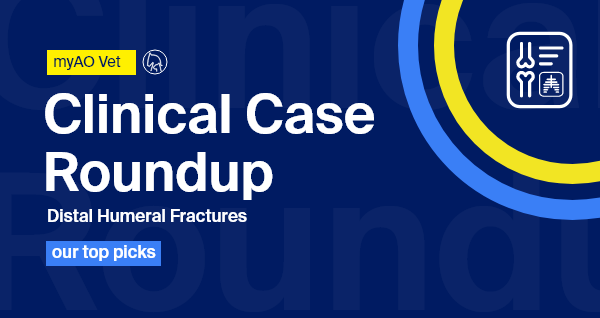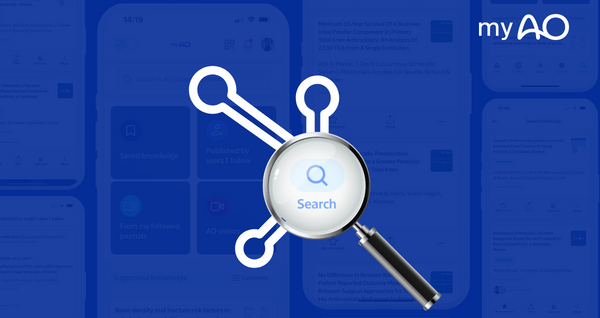Veterinary
- myAO clinical roundup on small animal fracture management Fracture management in small animals presents unique challenges—not only in achieving stable fixation and promoting healing, but also […]
December 2022
Review the most viewed videos, active groups and read articles that you, together with the myAO network, found as interesting over the year.June 2022
Veterinary joint surgery includes a.o. cranial cruciate ligament surgeries and surgical treatments for a range of joint issues such as elbow dysplasia, hip dysplasia, as well as full knee and hip replacements. In this clinical topic roundup, you´ll find an exclusive selection of AOVET´s knowledge gems on joint surgery.November 2022
Various fixation methods have been successfully applied to the repair of distal humeral fractures in dogs. These include minimally invasive plate osteosynthesis (MIPO), open reduction internal fixation (ORIF) with plate and screw constructs or combinations of pins, screws and wire, external skeletal fixation (ESF), intramedullary pinning (IMP), and cross-pin fixation.August 2021
Small animal cases can pose unique challenges for veterinary orthopedic surgery. In this clinical topic roundup, you´ll find an exclusive selection of AOVET´s knowledge gems on Small Animal Orthopedics.- The very best of myAO in 2023 Hi there, As we approach the closing days of 2023, it’s time for a reflection on what resonated most with our […]
- On the road to more relevant knowledge recommendations Content is King Surgeon’s continuous updating of knowledge and technology is the embodiment and requirement of professionalism. This statement […]
- Your profile is becoming a central part of the myAO experience, reflecting your achievements and contributions in the surgical world. Your myAO profile is now an outstanding means to […]














